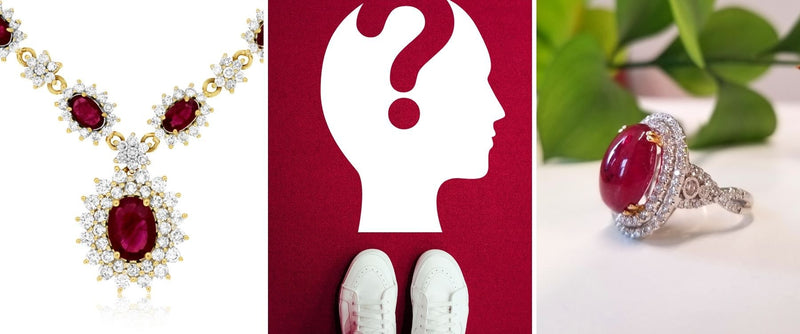
? Ruby Questions You Didn't Know You Had?
Where Are Rubys Found?
Rubys are found in different colors and quality in locations throughout the world but the best quality & color are typically found in Mogok, Myanmar, Africa, & Bangkok. The trade term "Burmese Rubies" usually refers to rubys that are of the most desirable color & size.
How Do I Care for my Rubys?
Rubies are often heat treated to remove purplish coloring, leaving a more pure red. The process can also remove “silk” (minute needle-like inclusions) that can cause a gem to appear lighter in tone and be more opaque. The trade typically accepts heat treatment, as it is stable to normal conditions of wear and care. However, rubies may also be subjected to lattice diffusion treatment and dyeing. In lower-quality material, surface-reaching fractures and cavities may be filled with a glass to decrease their visibility so the gem appears more transparent. Some of these treatments may make the ruby more vulnerable to damage during normal wear and care.
In most cases, the July birthstone can be safely cleaned with warm soapy water and a soft brush. Ultrasonic and steam cleaners are usually safe for untreated, heat-treated and lattice diffusion–treated stones. Glass-filled or dyed stones should only be cleaned with a damp cloth.
What Treatments Are Common in Rubys?
The majority of Ruby found on the market today have had some form of treatment done to them. The most common of the treatments are known as “Heat Treatment”, “Glass Filling”, “Clarity Enhancement” or “Beryllium treatment”.
A treated Ruby is not necessarily a bad thing. Less than 1% off all Rubies that are mined can actually make it to the market without any treatment. These untreated stones are the most precious and valuable Rubyies available. If they were not treated, 99% of the stones would never make it onto the market. That means the average person may never see a Ruby if it was not for treatments.
Do Synthetic & Imitation Ruby Exist?
A synthetic gem material is one that is made in a laboratory, but which shares virtually all chemical, optical, and physical characteristics of its natural mineral counterpart. Ruby is no exception, lab grown synthetics are very common in the jewelry industry especially in mass produced jewelry.
An imitation gem is a stone which looks similar in color and clarity but has a different chemical makeup, and optical or physical characteristics. Ruby has imitations which look similar but are not exactly the same.
What are the Technical Properties of a Ruby?
- Mineral: Corundum
- Chemical composition: Al2O3
- Color: Red
- Refractive index: 1.762 to 1.770
- Birefringence: 0.008 to 0.010
- Specific gravity: 4.00 (+/- 0.05)
- Mohs Hardness: 9
How did the Ruby create the study of Gemology?
Until the beginning of the 19th century, red spinels were thought to be rubies. Famous stones including "Black Prince's Ruby" and "Timur Ruby" were thought to be rubies until it was discovered that they and many other red stones were actually spinel. Trying to tell the difference between the two stones led to the beginning of the Gemology.
